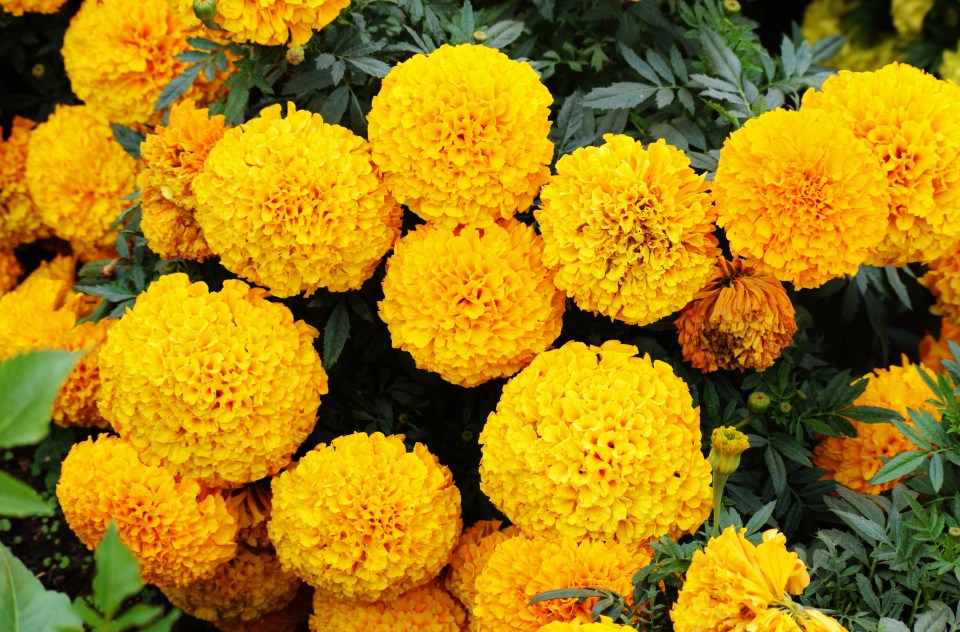I’m a gardener and a 15 cent trick makes my plants ‘bloom like crazy’




As summer draws to a close, many garden enthusiasts are keen to keep their gardens colourful and vibrant well into autumn.
Luckily, experts share tips on how to keep your plants thriving without costing you a lot of money.
In fact, you may not need to spend any extra money at all.
Jo, founder of Beards and daisies and author of the houseplant guide ‘The Indestructible‘ explained how to make your garden bloom and which plants are best to buy.
Whether you’re a seasoned plant lover or just starting out in your indoor garden, Jo says the Peace Lily is a versatile plant that’s more than just a pretty face.
Here she revealed the 10 benefits of the plant and also gave a handy tip to make your plants bloom like crazy.
Air purification
Removes Toxins: Peace Lily plants are effective in filtering harmful toxins such as benzene, formaldehyde, trichloroethylene, ammonia and xylene from the air.
These substances are commonly found in household items such as paint, cleaning products and furniture.
Improves Air Quality: By reducing these pollutants, the Peace Lily helps to improve indoor air quality. This makes breathing easier and can reduce symptoms associated with poor air quality, such as headaches and respiratory problems.
Increases humidity
Releases moisture: Peace lilies release moisture into the air through a process called transpiration.
This allows you to increase the humidity in your home, which is especially useful in dry environments or in winter, when indoor air is often dry.
Easy to maintain
Low Maintenance: Peace Lily plants are relatively easy to care for, making them ideal for beginners and experienced plant owners alike.
They thrive in low to medium light and require minimal watering, usually only once a week.
Durable: They are hardy plants that can tolerate some neglect, such as not watering them occasionally.
Aesthetic appeal
Elegant appearance: With their glossy, dark green leaves and white flowers. The white flowers are known as spathes, while the pointed structure inside is called the spadix.
Together they form one flower.
Peace lilies add a touch of elegance to any room. Their minimalist yet attractive appearance makes them a popular choice for home and office decor.
Blooms Indoors: Unlike many other houseplants, Peace Lily can bloom indoors under the right conditions, providing year-round beauty.
Symbolism
Peace and Tranquility: The Peace Lily is often associated with peace, purity, and healing.
It is a popular gift to provide comfort to those who have lost a loved one or as a symbol of peace and tranquility in the home.
Garden work in September

As September begins, so does autumn. Veronica Lorraine, gardening editor at The Sun, has a few jobs to keep you busy as the summer sun fades.
1. Start thinking about spring bulbs
It’s early bulb season! As well as the more traditional daffodils, crocuses, alliums and bluebells, try snake-head fragillaries for something a little different.
2. Think of the bees
Be sure to continue to feed the bees with fall-flowering pollinators such as stonecrop, honeysuckle and asters.
3. Dig and enjoy your potatoes
The potatoes from the main crop are ready to be harvested. Make sure you harvest them all so they are not damaged by slugs.
4. Change your lawn mowing schedule
Raise the height of your lawn mower and start reducing the amount of mowing you do. Fertilize it in the fall, especially if you didn’t get around to it over the summer, and start raking to remove thatch.
5. Plant new perennials while the soil is still warm.
6. Take cuttings of salvia
It is as easy as cutting a shoot tip above a node and throwing it in a glass of water to see if roots develop. Especially with delicate Salvias that do not survive the winter.
7. Give camellias enough water so that buds will form again next year.
8. Keep removing faded flowers and watering your hanging baskets
They must continue until the first frost.
9. Make pumpkins Halloween-ready
Remove any leaves that are covering the pumpkins so they are ready for Halloween. Also make sure to water them regularly as they are very thirsty.
10. Check your pond
Cover your pond with a net to prevent it from filling up with fallen leaves when the trees start to fall.
Reduces mold spores
Absorbs excess moisture: Peace lilies can help reduce mold spores in the air by absorbing excess moisture through their leaves.
This helps prevent mold growth in damp areas such as bathrooms.
Improves mental well-being
Improves Mood: The presence of houseplants such as the Peace Lily has been shown to improve mood, reduce stress and increase feelings of well-being.
Caring for the plant can also be therapeutic.
Improves sleep
Better sleep quality: By improving air quality and humidity, peace lilies can help promote better sleep.
Placing one in your bedroom may help you sleep better.
Jo says that “caring for your peace lily is wonderfully simple, making it a perfect choice for both novice and experienced plant lovers.
“This resilient plant thrives in low to moderate light, making it a versatile plant that can be found in almost any room in your home.
“Watering is easy too: just give it a little water when the top inch of soil feels dry and it will reward you with lush, green leaves and beautiful white flowers.
Moreover, the spoon plant is forgiving; it will quickly bloom again if you forget to water it.
“With minimal effort, you can enjoy a vibrant and healthy plant that also helps purify the air in your space.”
Kitchen waste hack
Gail Nacoste, a member of the Creative Gardening group on Facebook, says her peace lily’s prolific flowering is thanks to using water from banana peels.
In a recent post, Gail shared a photo of her blooming peace lily, captioning it, “I use banana peel water to water my peace lily and it is blooming like crazy with big flowers and growing fast.
“I’m now using it on my other plants too, and they’re all doing great!”
Gardening Mistakes That Could Get You Fined
The garden experts at Toolstation have revealed the garden laws you shouldn’t break.
While some of these laws can see you fined up to £20,000 in extreme cases, you can usually resolve the problem with a friendly chat with your neighbours.
Removing and pruning trees: If you have a tree in your yard that you want to get rid of, think twice and do your research.
The horticulture experts reveal: “If one neighbour wants to remove or significantly prune a tree that the other neighbour values, disputes can arise over the impact on views, shade or privacy.”
While it may cause concern, if it is within the boundaries of your property it is ultimately your choice unless there is a tree protection order in place.
“But some trees may be protected by a tree protection order, making it a criminal offence to uproot, top or destroy them, the experts warn.
The maximum fine for breaking this law is £20,000, so check carefully whether there is a TPO.
You can find out by contacting your local council for a map showing this information or you can ask to speak to your local tree manager.
Property lines and fences:One of the main causes of neighborhood disputes is disputes over property boundaries and fences.
To avoid this situation, garden professionals recommend checking your property’s title deeds to determine the correct boundaries
“Usually it is easy to determine who owns the fence since the fence posts are usually on the owner’s side,” they add.
“In addition, the height of fences or hedges can lead to conflicts between neighbours if one of the parties believes that the height exceeds the two-metre guideline.
“Hedges and fences may not be higher than two metres. If a neighbour complains about the height, the municipality can ask you to remove them.
“Fortunately, the standard fences are less than two meters high, so that shouldn’t be a problem.”
Garden constructions and additions:A pergola is the perfect addition to a garden if you want somewhere to relax in the shade.
But if it obstructs your neighbors’ view or violates local building codes, it could lead to a dispute, just like sheds and other garden structures.
“If you are unsure, talk to your neighbours to tell them what you are planning to do. And if there is a problem, contact your local council. They will be able to give you more advice,” the horticultural experts advise.
Overhanging branches and plants: “When branches, vines or roots from a neighbor’s tree or plant penetrate into the adjacent property, this can lead to disagreements about possible damage to structures, blocked views or the burden of maintenance,” the professionals reveal.
However, please note that you may only prune overhanging branches up to the boundary of your property, otherwise this may be considered a violation of the law.
You can climb the tree to do work if necessary, but only do this on your own property. Make sure you stay on your side of the fence if you don’t have permission to enter your neighbor’s yard.





